Unlock Authentic Japan: Hands-On Traditional Craft Workshops
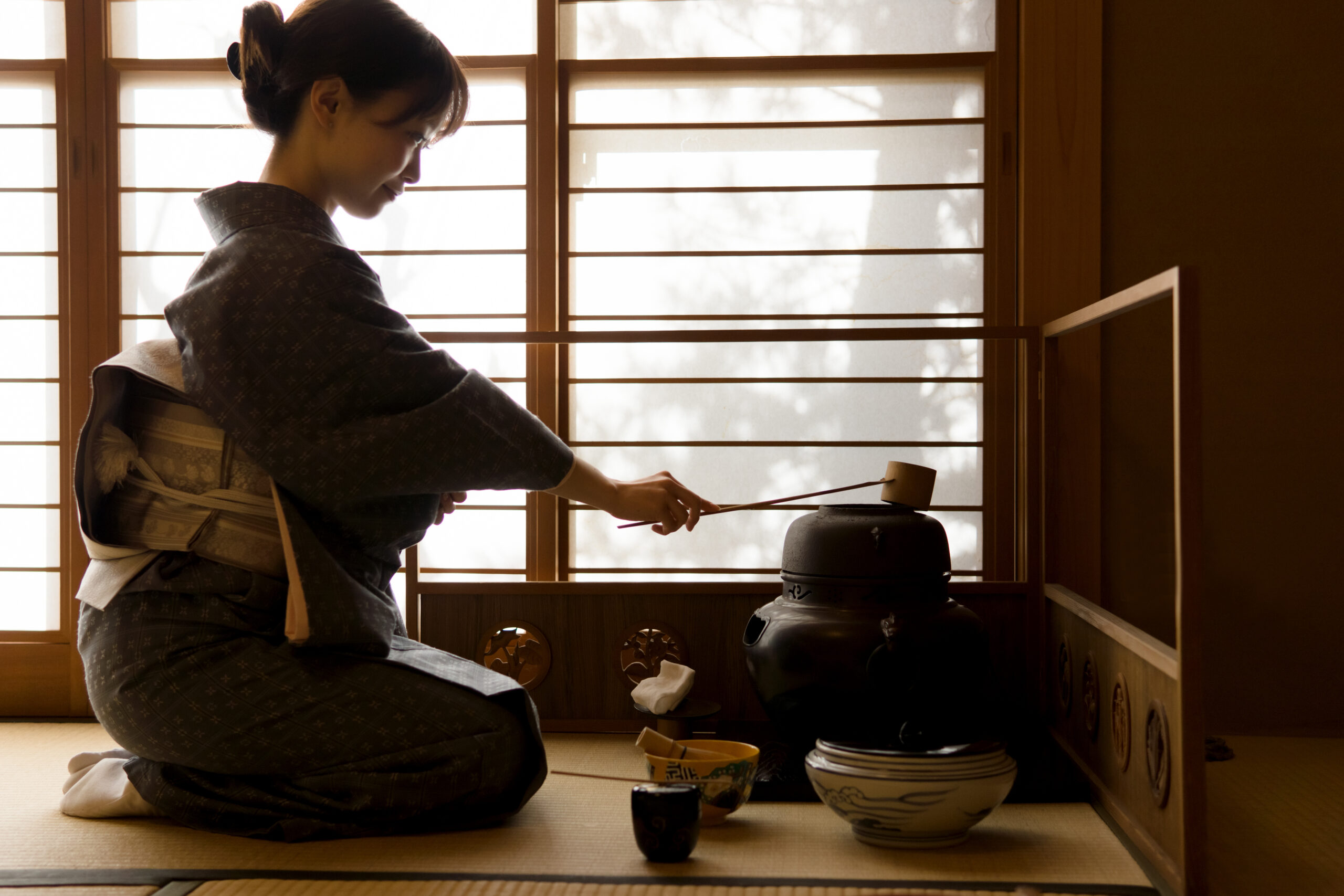
“I want to experience real Japanese culture, not just see tourist spots. Are there any hands-on workshops where I can learn traditional crafts like pottery or calligraphy?”
Yes, you can absolutely unlock authentic Japan through hands-on traditional craft workshops.
This article will guide you through the captivating world of Japanese traditional craft workshops, introducing you to experiences like pottery, calligraphy, tea ceremony, and kimono dressing. We’ll explore the allure of each craft, what to expect in a workshop, and how to easily book your own cultural adventure.
Introduction: Unveiling Authentic Japan Through Craft
Beyond Tourist Trails: Discovering Japan’s Heart
Many travelers to Japan are drawn to the iconic images: bustling cityscapes, serene temples, and vibrant pop culture. While these sights are undoubtedly captivating, authentic Japanese cultural experiences go beyond the surface. To truly understand Japan, you must delve deeper into its traditions, and what better way to do so than through hands-on engagement with Japanese crafts?
The Allure of Hands-On Cultural Experiences
Instead of merely observing from a distance, imagine yourself actively participating in age-old practices. Japanese traditional crafts workshops offer this unique opportunity. They are not just classes; they are gateways to understanding the 心 (kokoro), or heart, of Japan. By working with your hands, guided by skilled artisans, you’ll gain a profound appreciation for the dedication, artistry, and history embedded within each craft.
What This Article Offers: Your Guide to Japanese Craft Workshops
This article serves as your comprehensive guide to navigating the world of Japanese traditional craft workshops. We will explore a curated selection of experiences, including:
- 陶芸 (Tōgei) – Pottery: Learn to shape clay and create your own Japanese ceramics.
- 書道 (Shodō) – Calligraphy: Discover the meditative art of beautiful writing with brush and ink.
- 茶道 (Sadō) – Tea Ceremony: Immerse yourself in the tranquil ritual of preparing and enjoying 抹茶 (Matcha) green tea.
- 着付け (Kitsuke) – Kimono Dressing: Experience the elegance of wearing a traditional 着物 (Kimono).
Prepare to unlock authentic Japan through the enriching world of hands-on traditional craft workshops.
Why Hands-On Craft Workshops are Key to Cultural Immersion
More Than Just Souvenirs: Engaging with Tradition
Souvenirs are wonderful reminders of your travels, but hands-on craft workshops offer something far more profound than a memento. They provide a direct connection to Japanese traditions, allowing you to become an active participant rather than a passive observer. Instead of simply purchasing a piece of pottery, you can learn to shape it yourself. Instead of just admiring calligraphy, you can try your hand at creating your own characters. This active engagement transforms your experience from superficial sightseeing to meaningful cultural immersion.
The Benefits of Immersive Learning
Immersive learning through craft workshops offers a multitude of benefits that contribute to a richer and more authentic travel experience.
Deeper Cultural Understanding
By participating in a workshop, you gain insights that go beyond guidebooks and museums. You learn about the history, techniques, and philosophy behind each craft directly from experienced instructors. You’ll understand the cultural values embedded in these traditions, such as patience, precision, and respect for materials. This firsthand experience fosters a deeper cultural understanding that is both intellectual and emotional.
Personal Connection to Craftsmanship
Creating something with your own hands fosters a personal connection to craftsmanship. You begin to appreciate the skill and dedication required to master these traditional arts. Every step of the process, from preparing the materials to the final creation, becomes a learning experience. This personal investment makes the craft more meaningful and memorable than any purchased souvenir. You’ll leave with a newfound respect for the artisans who have preserved these traditions for generations.
Creating Lasting Memories
Workshops are not just about learning a skill; they are about creating lasting memories. The experience of working alongside fellow participants, guided by a knowledgeable instructor, becomes a unique and cherished travel story. The sense of accomplishment you feel when completing your craft, coupled with the cultural exchange during the workshop, creates memories that will resonate long after you leave Japan. You will not only have a souvenir, but also a personal narrative connected to Japanese culture.
For Beginners and Experts Alike: Workshops for Everyone
One of the great aspects of Japanese traditional craft workshops is their accessibility. Many workshops are designed to be beginner-friendly, welcoming individuals with no prior experience. Skilled instructors provide step-by-step guidance, ensuring that everyone can participate and create something beautiful, regardless of their skill level. Whether you are a complete novice or have some artistic background, you can find a workshop that suits your interests and abilities. For those with more experience, there are also workshops that offer advanced techniques and deeper dives into specific crafts. There truly is a workshop for everyone who wants to experience the beauty of Japanese traditional crafts.
Top Japanese Traditional Craft Workshops to Experience
Pottery (陶芸 – Tōgei): Shaping Clay, Shaping Culture
陶芸 (Tōgei), or Japanese pottery, is an art form with a rich history stretching back millennia. From rustic earthenware to delicate porcelain, Japanese ceramics are celebrated worldwide for their beauty, functionality, and regional diversity. Participating in a pottery workshop offers a chance to connect with this ancient tradition and create your own unique piece of Japanese art.
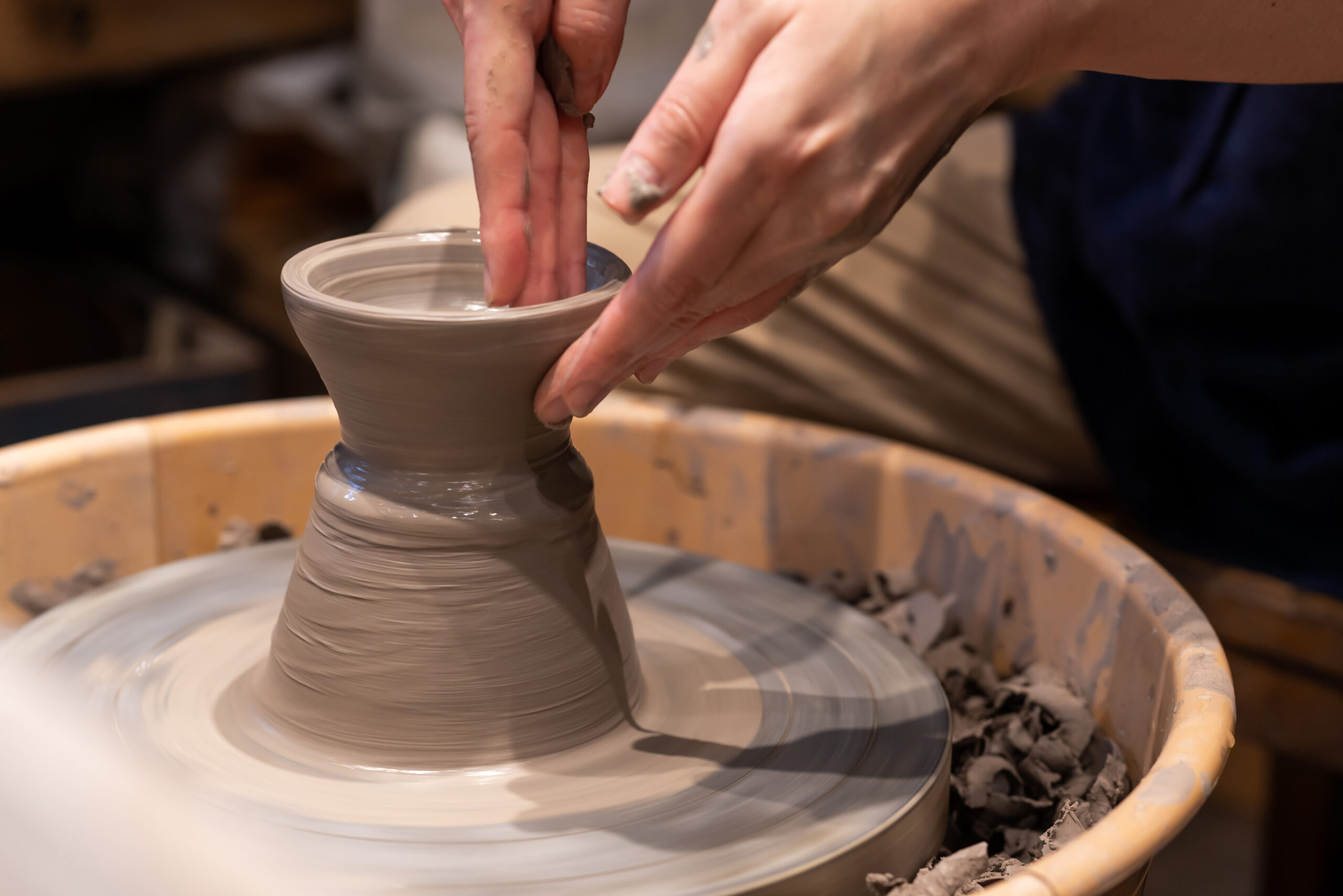
The Ancient Art of Japanese Ceramics
Japanese pottery traditions are deeply rooted in the country’s history and geography. Different regions developed distinct styles, influenced by local clay types, firing techniques, and aesthetic preferences. For example, 備前焼 (Bizen-yaki) from Okayama Prefecture is known for its earthy, unglazed stoneware, while 有田焼 (Arita-yaki) from Saga Prefecture is famous for its vibrant, colorful porcelain. Learning about 陶芸 (Tōgei) is not just about shaping clay; it’s about understanding the cultural landscape of Japan. In a workshop, you’ll often hear about these regional variations and the historical context that shaped them, adding depth to your hands-on experience.
Hands-On Pottery Workshop: What to Expect
In a hands-on pottery workshop, you will typically be guided through the fundamental techniques of shaping clay. Many beginner workshops focus on 手びねり (Tebineri), or hand-building, a method that involves shaping clay without a pottery wheel. You might learn to create simple forms like お皿 (Osara) (plates), お茶碗 (Ochawan) (tea bowls), or 湯呑み (Yunomi) (tea cups). Some workshops also offer instruction on using a 轆轤 (Rokuro), or potter’s wheel, allowing you to experience the mesmerizing process of wheel throwing. You will learn to knead the clay (土練り – Tsoneri), center it on the wheel (if using), shape it with your hands, and potentially add decorative elements. The workshop will also cover the basics of glazing (釉薬がけ – Yūyakugake), where you’ll choose and apply a glaze to give your piece color and finish. Be prepared to get your hands dirty and embrace the tactile nature of working with clay!
Best Japanese Traditional Workshops for Tourists in Pottery
Many pottery studios across Japan, especially in areas known for their ceramics, offer English-friendly workshops specifically designed for tourists. Popular locations include Kyoto, with its proximity to famous pottery towns like 清水焼 (Kiyomizu-yaki) district, and Kanazawa, known for 九谷焼 (Kutani-yaki). In these workshops, instructors are accustomed to teaching beginners and provide clear, patient guidance. Look for workshops that highlight authentic techniques and offer a cultural context to the pottery making process. Some workshops may even include a visit to a local kiln or pottery museum to further enrich your understanding. These pottery workshops for tourists are a fantastic way to create a truly unique and personal souvenir while immersing yourself in Japanese artistic tradition.
Want to Learn More About Japanese Pottery?
If you’re eager to explore the fascinating world of Japanese pottery in more depth, these official websites offer a wealth of information on various styles:
- Arita-yaki (有田焼): Explore the exquisite world of Arita-yaki from Saga Prefecture on the website of the Saga Ceramics Industrial Assocoation. Discover comprehensive information on Arita porcelain, its rich history, production techniques, and the artistry of its craftspeople. This website is available in English and provides a deep dive into Arita-yaki.
- Bizen-yaki (備前焼): Discover the rustic charm of Bizen-yaki from Okayama Prefecture on the website of the Okayama Prefecture Bizen Pottery Association. Explore its history, artworks, and kilns. Available in both Japanese and English.
- Hagi-yaki (萩焼): Explore the understated elegance of Hagi-yaki from Yamaguchi Prefecture on the website of the Hagi Potters Association. Learn about its “七化け (Nanabake)” transformation and wabi-sabi aesthetic. Available in both Japanese and English.
- Kiyomizu-yaki (清水焼): Discover Kiyomizu-yaki from Kyoto at the Kiyomizu Pottery Complex Cooperative Association website. This Japanese resource serves as a directory for the Kiyomizu Pottery Complex, helping you find shops on a map, discover individual Kiyomizu-yaki pottery artists, and locate workshops within the complex, in addition to providing details about Kiyomizu-yaki pottery.
- Kutani-yaki (九谷焼): Explore the vividly decorated Kutani-yaki from Kanazawa on the Ishikawa Prefecture Kutani Ceramics and Porcelain Commerce and Industry Cooperative Association‘s official website. This website, available primarily in Japanese, serves as a portal to discover Kutani ware, offering links to museums and galleries in Ishikawa Prefecture showcasing Kutani-yaki, as well as websites introducing various aspects of Kutani ware.
- Mino-yaki (美濃焼): Discover the diverse world of Mino-yaki from Gifu Prefecture on the website of the Minoyaki Traditional Crafts Cooperative Association. While an English page is available, it offers less information compared to the comprehensive Japanese site. Explore its various styles like 織部 (Oribe), 志野 (Shino), and 黄瀬戸 (Kizeto).
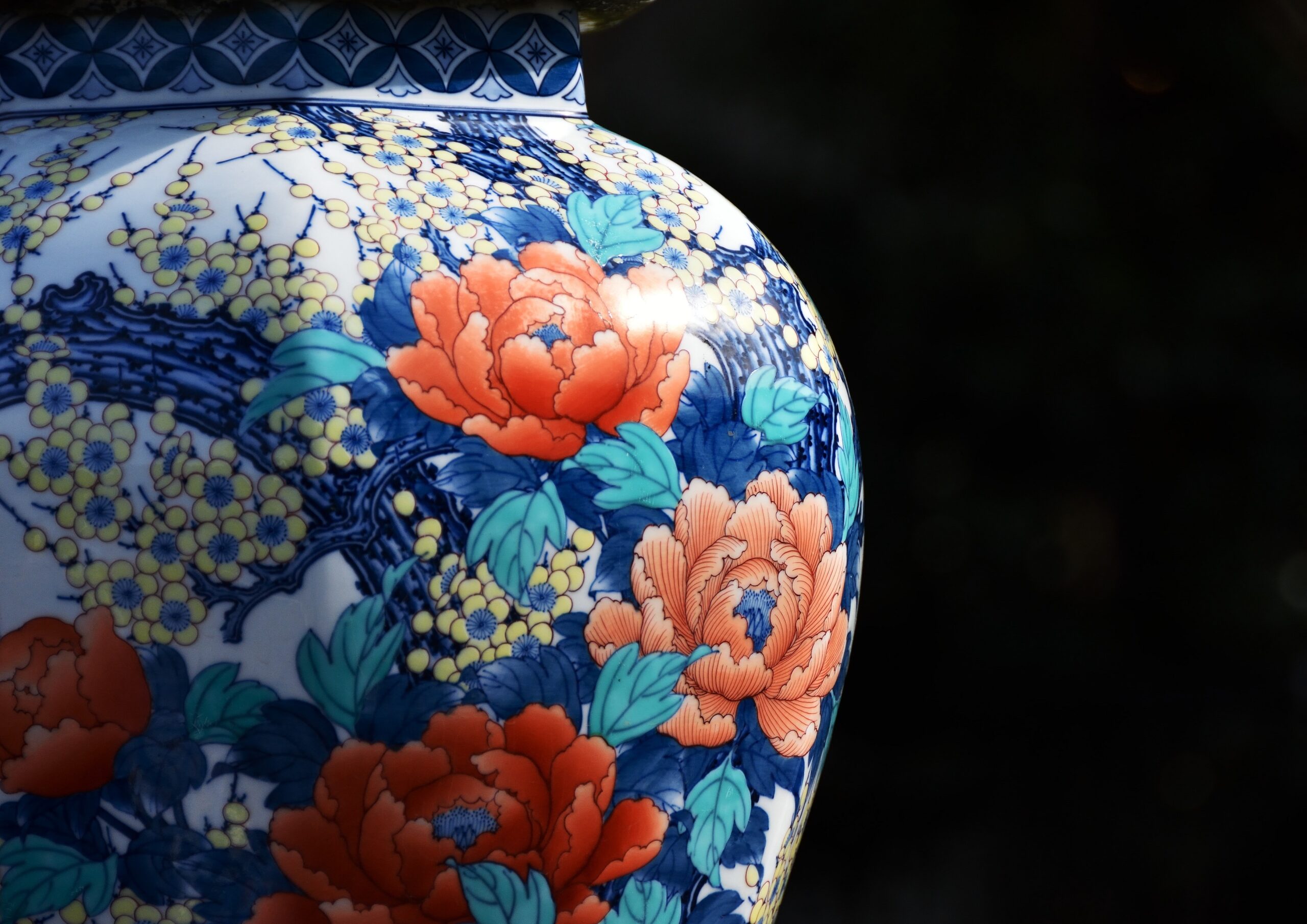
Calligraphy (書道 – Shodō): Brushstrokes of the Soul
書道 (Shodō), or Japanese calligraphy, is far more than just beautiful writing. It is a meditative art form, a discipline of mind and body, and a profound expression of Japanese aesthetics. Participating in a 書道 (Shodō) workshop offers a unique opportunity to experience this ancient art firsthand, to learn the basic techniques, and to appreciate the spiritual depth behind each brushstroke.

Shodō: More Than Just Beautiful Writing
While calligraphy in many cultures is valued for its aesthetic appeal, 書道 (Shodō) in Japan carries a deeper significance. It is considered a 道 (dō), or “way,” a path of self-cultivation and spiritual growth, much like 茶道 (Sadō) (tea ceremony) or 剣道 (Kendō) (swordsmanship). 書 (Sho), the character for writing, itself embodies the idea of capturing the essence of things. In 書道 (Shodō), each stroke is executed with precision, intention, and mindfulness. It is not simply about creating visually pleasing characters, but about expressing the spirit and energy (気 – Ki) of the writer and the subject matter. Understanding this philosophical dimension elevates the 書道 (Shodō) workshop experience beyond a mere art lesson, transforming it into a moment of cultural and personal enrichment.
Japanese Craft Workshops for Beginners: Calligraphy Edition
書道 (Shodō) workshops for beginners are designed to introduce you to the fundamental tools and techniques of this art form in a supportive and accessible way. Typically, a workshop will begin with an explanation of the tools of 書道 (Shodō), known as 文房四宝 (Bunbō Shihō), or “the four treasures of the study”:
- 筆 (Fude) – Brush: You will learn about different types of brushes, their materials (animal hair), and how to hold them correctly to achieve various strokes.
- 墨 (Sumi) – Ink Stick: You will experience grinding your own ink from an ink stick using a 硯 (Suzuri) – Inkstone and water. This process itself is considered part of the meditative preparation for calligraphy.
- 硯 (Suzuri) – Inkstone: The inkstone is not just a tool for grinding ink; it is also an object of beauty and craftsmanship, often made from precious stone.
- 半紙 (Hanshi) – Japanese paper: Special, thin paper designed for calligraphy, allowing the ink to bleed and create expressive lines.
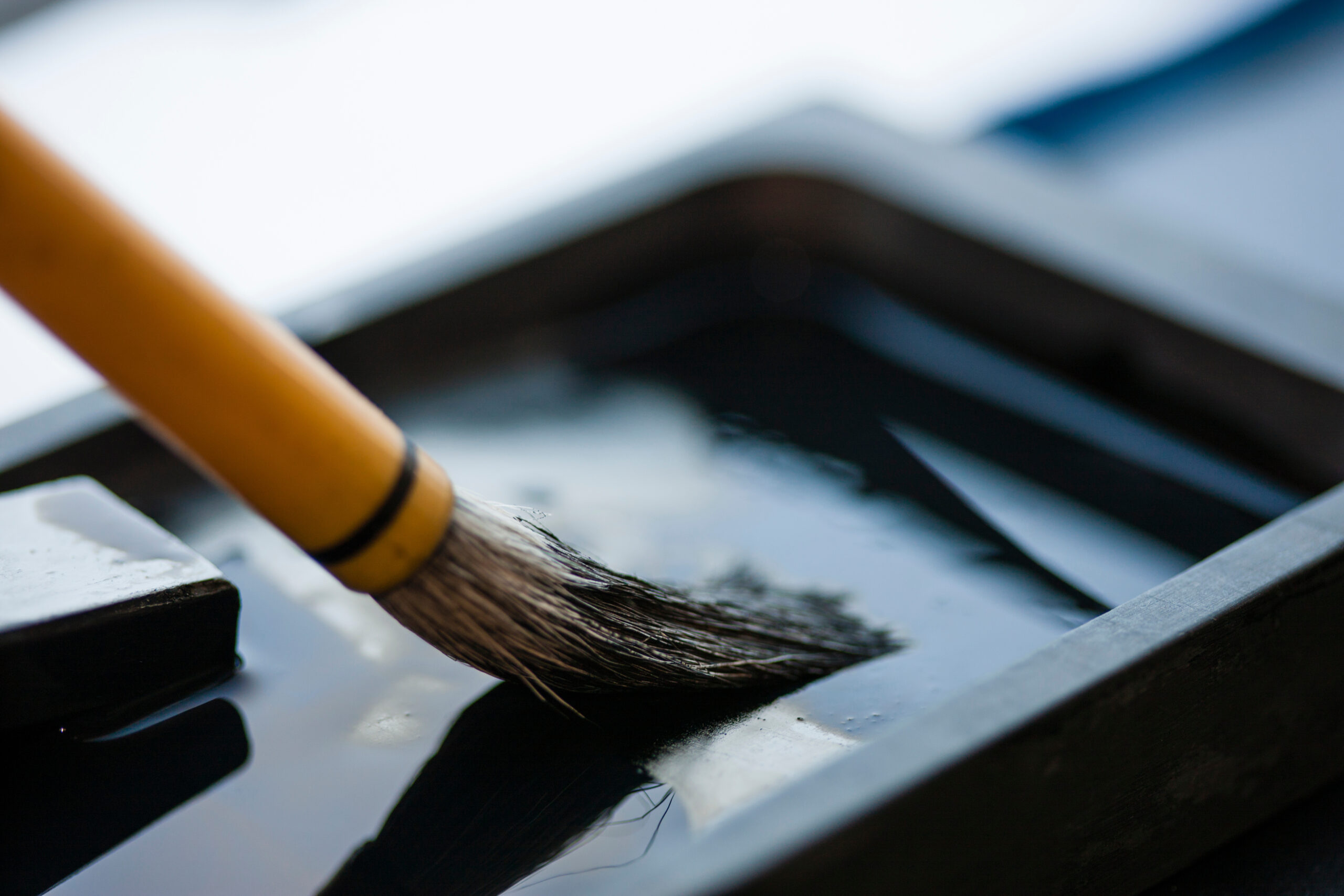
Under the guidance of an instructor, you will practice basic strokes (点画 – Tenkaku), learning the correct posture, brush handling, and ink control. You will then progress to writing simple characters (漢字 – Kanji), perhaps starting with characters representing nature, like 木 (Ki) (tree) or 水 (Mizu) (water). The focus is not on achieving perfect calligraphy immediately, but on experiencing the process, understanding the basic principles, and connecting with the art form on a personal level.
Experiencing the Zen of Calligraphy
Many practitioners describe 書道 (Shodō) as having a Zen-like quality. The act of calligraphy requires intense concentration, focus, and a quiet mind. As you immerse yourself in the process of grinding ink, controlling your breath, and executing each stroke with intention, you enter a state of mindfulness. The rhythmic movements, the feel of the brush on paper, and the unfolding of the ink create a sensory experience that can be deeply calming and meditative. A 書道 (Shodō) workshop can be a welcome respite from the fast pace of modern life, offering a moment of tranquility and self-reflection while engaging in a beautiful and meaningful art form. It’s an opportunity to not just learn calligraphy, but to experience a taste of Zen philosophy through artistic practice.
Tea Ceremony (茶道 – Sadō): A Ritual of Harmony and Mindfulness
茶道 (Sadō), also known as 茶の湯 (Chanoyu), or the Japanese Tea Ceremony, is much more than just preparing and drinking tea. It is a highly ritualized and refined practice steeped in history and philosophy. Participating in a 茶道 (Sadō) workshop offers a unique glimpse into this iconic Japanese tradition, allowing you to experience its tranquility, grace, and profound cultural significance.
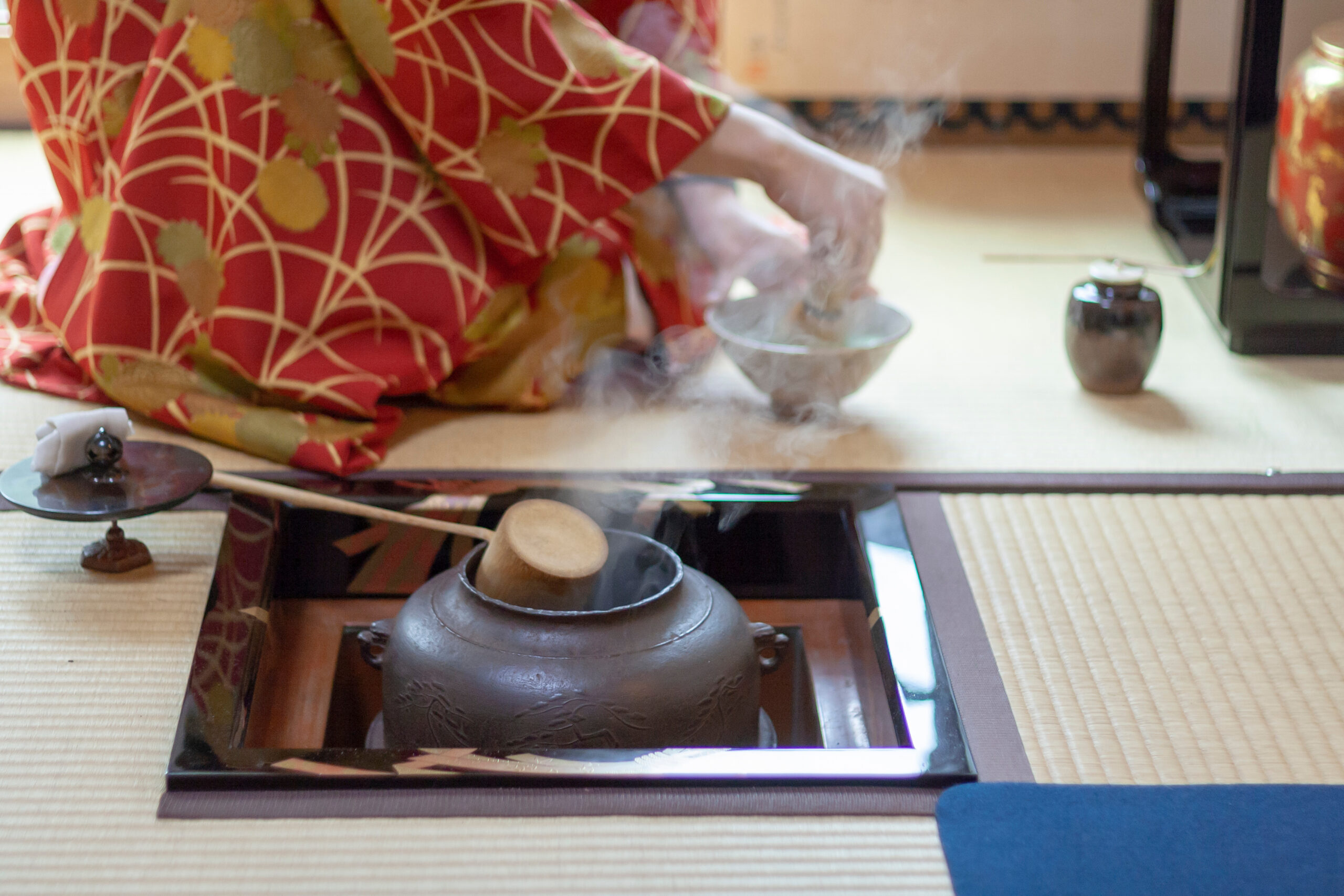
Understanding the Way of Tea
茶道 (Sadō) is often translated as “the Way of Tea,” and this “way” encompasses a complex system of aesthetics, etiquette, and spiritual principles. Rooted in Zen Buddhism, 茶道 (Sadō) emphasizes harmony (和 – Wa), respect (敬 – Kei), purity (清 – Sei), and tranquility (寂 – Jaku). Every element of the ceremony, from the meticulously prepared 茶室 (Chashitsu) – Tea Room to the precise movements of the 亭主 (Teishu) – Tea Host, is designed to create a harmonious and mindful experience for both the host and the guests (客 – Kyaku). Understanding these core principles is crucial to appreciating the depth of the 茶道 (Sadō) workshop experience. It’s not just about learning how to make tea, but about understanding a philosophy of life expressed through a ritualized practice.
Authentic Japanese Cultural Workshops: Tea Ceremony Immersion
An authentic tea ceremony workshop provides a hands-on introduction to the key elements of 茶道 (Sadō). While a single workshop cannot make you a tea master, it offers a valuable immersive experience and a deeper understanding of the tradition. In a typical workshop, you can expect to learn about and participate in:
- Entering the 茶室 (Chashitsu) – Tea Room: You will learn the proper way to enter a traditional tea room, often through a low entrance called 躙り口 (Nijiriguchi), designed to encourage humility and respect.
- Purification Rituals: You will observe or participate in ritual cleansing acts, such as washing hands at a 蹲踞 (Tsukubai) – Stone Basin, symbolizing purification before entering the sacred space.
- Preparation of 抹茶 (Matcha) – Green Tea: You will witness or learn the precise steps of preparing 抹茶 (Matcha), powdered green tea, using traditional utensils like a 茶筅 (Chasen) – Bamboo Whisk, 茶杓 (Chashaku) – Tea Scoop, and 茶碗 (Chawan) – Tea Bowl. You will learn about the importance of water temperature, whisking technique, and the creation of a smooth, frothy 抹茶 (Matcha).
- Serving and Receiving Tea: You will learn the etiquette of serving and receiving tea, including proper bowing (お辞儀 – Ojigi), rotating the 茶碗 (Chawan), and expressing gratitude.
- Enjoying 和菓子 (Wagashi) – Japanese Sweets: 和菓子 (Wagashi), traditional Japanese sweets, are served before the 抹茶 (Matcha) to cleanse the palate and complement the tea’s slightly bitter taste. You will learn about the role of 和菓子 (Wagashi) in the ceremony and how to appreciate their subtle flavors and seasonal designs.
Unique Japanese Cultural Experiences : Tea Ceremony as Meditation
Beyond the specific steps and etiquette, a 茶道 (Sadō) workshop can be a profoundly meditative experience. The slow, deliberate movements, the quiet atmosphere of the 茶室 (Chashitsu), and the focus on the present moment all contribute to a sense of calm and mindfulness. As you observe the host’s graceful movements, listen to the gentle sounds of the tea preparation, and savor the taste of 抹茶 (Matcha), you can experience a sense of inner peace and tranquility. Many find that the tea ceremony workshop offers a unique opportunity to escape the stresses of daily life and connect with a deeper sense of self and cultural awareness. It’s a chance to experience meditation in motion, and to appreciate the beauty of simplicity and mindful presence.
Kimono Dressing (着付け – Kitsuke): Wearing Tradition with Grace
着物 (Kimono), the traditional Japanese garment, is an iconic symbol of Japanese culture, instantly recognizable for its elegance, beauty, and intricate designs. Participating in a 着付け (Kitsuke) – Kimono Dressing workshop offers a delightful opportunity to experience the art of wearing a 着物 (Kimono) firsthand. More than just trying on clothing, it’s a journey into Japanese aesthetics, etiquette, and history.
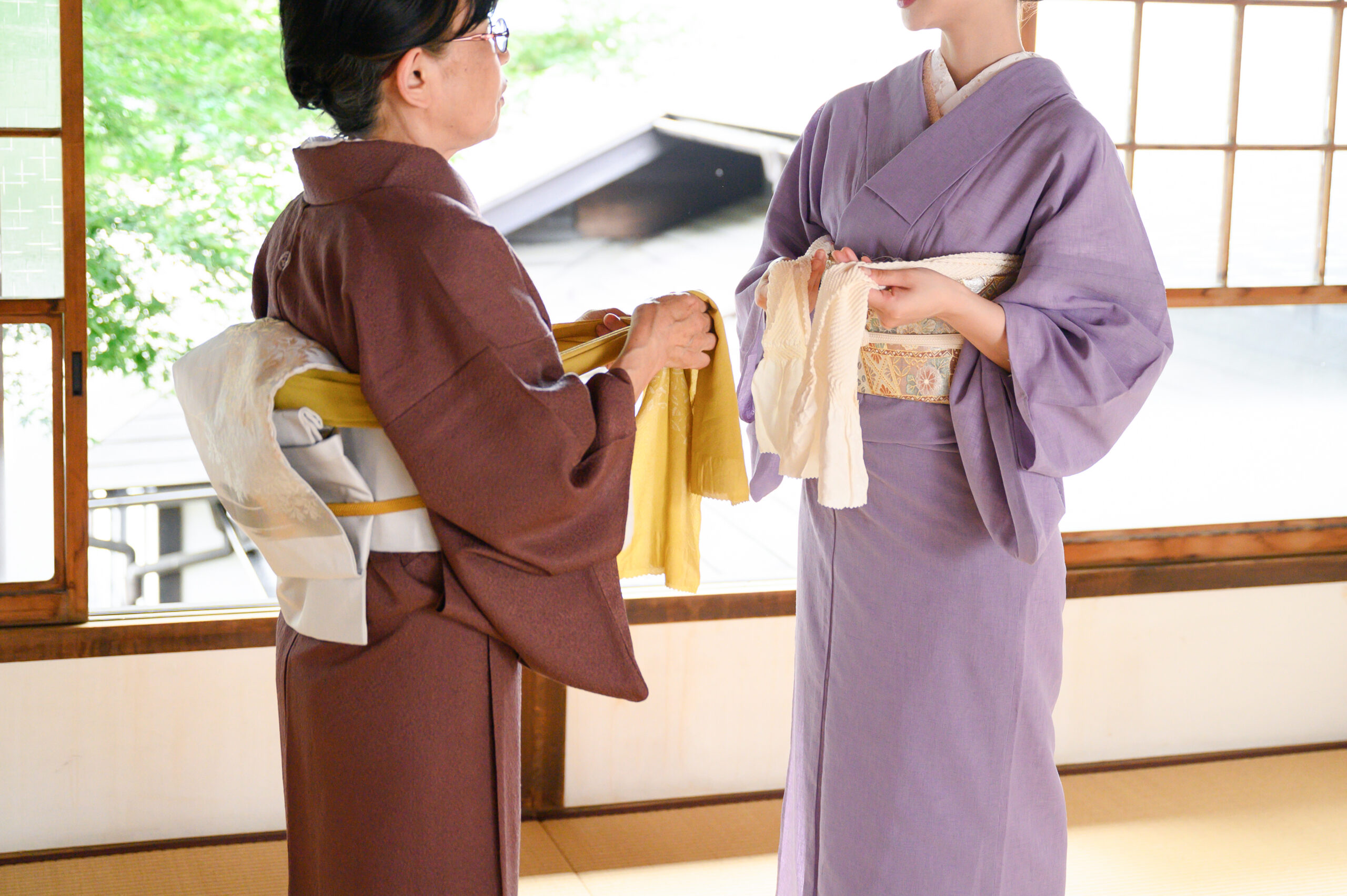
Kimono: An Icon of Japanese Elegance
The 着物 (Kimono) is not simply a garment; it is a canvas of art and tradition. For centuries, the 着物 (Kimono) has been an integral part of Japanese life, reflecting social status, seasonal changes, and personal expression. From the luxurious silk 着物 (Kimono) worn for formal occasions to the more casual cotton 浴衣 (Yukata), each type of 着物 (Kimono) tells a story. The intricate patterns, vibrant colors, and meticulous craftsmanship of 着物 (Kimono) are admired worldwide. Understanding the cultural significance of 着物 (Kimono) enhances the 着付け (Kitsuke) workshop experience, transforming it into more than just a dress-up session, but a respectful engagement with Japanese heritage.
Japanese Craft Workshops: Kimono Transformation
A 着付け (Kitsuke) workshop provides a hands-on experience of being transformed into a vision of Japanese elegance. These workshops, especially popular in tourist destinations like Tokyo and Kyoto, are designed to be fun, informative, and accessible to everyone. In a typical 着付け (Kitsuke) workshop, you can expect:
- Choosing Your 着物 (Kimono) and 帯 (Obi) – Sash: You will be able to select from a variety of 着物 (Kimono) and 帯 (Obi) (sashes), often with guidance from instructors to choose colors and patterns that complement you and the season. You’ll learn about the different types of 着物 (Kimono), such as 小紋 (Komon) (small patterned Kimono) for casual occasions or 訪問着 (Hōmongi) (visiting Kimono) for semi-formal events.
- Assistance from 着付け師 (Kitsukeshi) – Kimono Dressers: Professional 着付け師 (Kitsukeshi) (kimono dressers) will expertly assist you in wearing the 着物 (Kimono). You’ll witness the layers and intricacies involved in proper 着付け (Kitsuke), from the 襦袢 (Juban) – Undergarment to the 帯締め (Obijime) – Sash Cord. The process itself is a fascinating demonstration of skill and artistry.
- Learning about 着付け (Kitsuke) Techniques: While the 着付け師 (Kitsukeshi) will do most of the dressing, they will also explain the key steps and techniques involved. You’ll learn about the importance of posture, balance, and the precise folding and tying methods that create the elegant 着物 (Kimono) silhouette.
- Photo Opportunities in 着物 (Kimono): Once dressed in your 着物 (Kimono), you’ll have ample opportunities to take photos and admire your transformation. Many workshops offer beautiful backdrops or even guided walks in traditional neighborhoods, allowing you to fully embrace the 着物 (Kimono) experience.
Finding Your Perfect Workshop: A Practical Guide
Online Resources for Workshop Discovery
Finding and booking the ideal Japanese traditional craft workshop is easier than you might think, thanks to the wealth of online resources available. A little online exploration can open doors to a world of cultural experiences tailored to your interests and travel plans.
Booking Platforms and Tourism Websites
Several online booking platforms specialize in cultural experiences and workshops in Japan. These platforms often feature a curated selection of traditional craft workshops, allowing you to easily search, compare, and book experiences in English. Popular platforms to explore include:
- Japan Experience: Japan Experience specializes in high-quality, curated cultural experiences in Japan, including traditional craft workshops. Known for its in-depth Japan knowledge and excellent customer support, they offer personalized, smaller group experiences ideal for immersive cultural exploration.
- Activity Japan: Activity Japan is a Japan-specific platform with a strong focus on authentic cultural experiences, offering a vast selection of traditional craft workshops across Japan. Features extensive listings, detailed English information, and a user-friendly booking interface.
- asoview!(アソビュー!): asoview! is a major Japanese platform with an enormous selection of leisure and cultural activities in Japan, including a wide array of traditional craft workshops. Primarily in Japanese, it provides access to local and niche workshops often unavailable on international platforms.
- Japan Travel Websites: Many official Japan tourism websites and local tourism boards also list cultural experiences and workshops. Websites like the Japan National Tourism Organization (JNTO) website or prefectural tourism websites can be valuable resources for finding authentic and reputable workshops.
When using these platforms, be sure to carefully review the workshop details, including:
- Craft type and specific techniques taught
- Location and accessibility
- Language of instruction (English availability)
- Duration and schedule
- Price and inclusions
- Reviews from previous participants
Searching for “Japanese Workshops Near Me”
For a more direct approach, simply using search engines with relevant keywords can be highly effective. Try searches like:
- “Pottery workshop Kyoto“
- “Calligraphy class Tokyo English“
- “Tea ceremony experience Kanazawa“
- “Kimono dressing workshop Hiroshima“
- “Japanese craft workshops near me“
Adding location keywords (city, region) and specifying “English” for language can help narrow down your search and find workshops that are convenient and accessible. Pay attention to search results from local businesses, studios, and cultural centers, as these are often the direct providers of workshops. Google Maps can also be a useful tool to search for workshops in a specific area and see their locations and reviews.
Key Considerations When Choosing a Workshop
There are so many craft workshops in Japan, it’s important to consider your preferences and priorities to choose the perfect experience for you. Here are some key factors to keep in mind:
Location: Tokyo, Kyoto, and Beyond
Tokyo and Kyoto are undoubtedly popular destinations for cultural workshops, offering a wide variety of options due to their high concentration of tourists and artisans. However, don’t limit yourself to these major cities. Many regional areas throughout Japan are renowned for specific crafts and offer more authentic and less crowded workshop experiences. For example, if you are interested in pottery, consider visiting areas like Bizen (Okayama), Arita (Saga), or Hagi (Yamaguchi), directly at the source of these famous pottery styles. Exploring workshops in lesser-known regions can lead to unique discoveries and a deeper immersion in local culture.
Language Accessibility: English-Friendly Options
Language barrier can be a concern for some international visitors. Fortunately, many workshops in tourist areas offer English instruction or have English-speaking staff. When searching for workshops, explicitly look for “English-friendly” or “English-speaking” in the workshop descriptions. Booking platforms often provide language information, and you can also contact the workshop provider directly to inquire about language support. Don’t hesitate to ask if English guidance is available – many artisans are eager to share their craft with international audiences and will make efforts to accommodate language needs.
Skill Level and Workshop Type
Consider your skill level and desired workshop type when making your selection. Beginner workshops are designed for individuals with no prior experience and provide a gentle introduction to the craft. Intermediate or advanced workshops may delve into more complex techniques and require some prior knowledge. Think about what you hope to achieve from the workshop. Are you looking for a fun and casual introduction, or a more in-depth learning experience? Some workshops focus on creating a specific item, while others offer more open-ended exploration. Choose a workshop that aligns with your learning goals and interests.
Duration, Cost, and Reviews
Workshop duration can vary from a couple of hours to a full day, or even multi-day intensive courses. Consider how much time you want to dedicate to the craft experience within your travel itinerary. Workshop costs also vary depending on the craft, duration, materials, and instructor. Compare prices between different workshops and factor in your budget. Finally, read reviews from previous participants to get an idea of the workshop quality, instructor’s teaching style, and overall experience. Positive reviews are a good indication of a reputable and enjoyable workshop.
Booking Tips and What to Expect After Booking
Once you’ve found your perfect Japanese craft workshop, here are some booking tips to ensure a smooth and enjoyable experience:
- Book in Advance: Popular workshops, especially during peak tourist seasons, can fill up quickly. Book your workshop in advance, ideally several weeks or even months ahead of your travel dates, to secure your spot and avoid disappointment.
- Confirm Booking Details: After booking, carefully review your booking confirmation for details such as date, time, location, directions, what to bring, and cancellation policies. Save the confirmation email or print it out for easy access.
- Check for Pre-Workshop Communication: Some workshop providers may contact you before the workshop with additional information or instructions. Check your email regularly for any pre-workshop communication and respond promptly if required.
- Prepare for a Hands-On Experience: Remember that you will be actively participating in the craft. Wear comfortable clothing that you don’t mind getting a little messy, especially for pottery or calligraphy workshops. Tie back long hair if necessary.
- Be Punctual: Arrive on time for your workshop to ensure you don’t miss any instructions or demonstrations. Japanese culture values punctuality, and being on time is a sign of respect for the instructor and fellow participants.
- Get Ready to Learn and Have Fun!: Approach your Japanese craft workshop with an open mind, a willingness to learn, and a sense of adventure. Relax, enjoy the process, and embrace the opportunity to create something beautiful and connect with Japanese culture in a unique and meaningful way.
Enhancing Your Craft Workshop Adventure
Pre-Workshop Preparation: A Little Goes a Long Way
To truly maximize your Japanese craft workshop experience, a little preparation beforehand can significantly enhance your immersion and enjoyment. Taking a few simple steps before your workshop will allow you to focus on learning and creating, rather than logistical details.
Learning Basic Japanese Phrases
While many workshops cater to English speakers, learning a few basic Japanese phrases related to the craft and general courtesy will be greatly appreciated and can enrich your interaction with instructors and fellow participants. Simple phrases to consider learning include:
- こんにちは (Konnichiwa) – Hello
- ありがとう (Arigatō) – Thank you
- お願いします (Onegaishimasu) – Please (when asking for help or requesting something)
- すみません (Sumimasen) – Excuse me / Sorry
- はい (Hai) – Yes
- いいえ (Iie) – No
- [Craft name] を体験したいです。 ([Craft name] wo taiken shitai desu.) – I would like to experience [craft name]. (e.g., 陶芸を体験したいです – Tōgei wo taiken shitai desu. – I would like to experience pottery.)
- 教えてください。 (Oshiete kudasai.) – Please teach me.
- これは何ですか? (Kore wa nan desu ka?) – What is this?
- きれいです。(Kirei desu.) – It’s beautiful.
- すごいですね。(Sugoi desu ne.) – Amazing! / Impressive!
Even attempting a few Japanese phrases will demonstrate your interest in and respect for the culture, and instructors will often be delighted to help you learn more. There are many language learning apps and online resources that can help you learn basic Japanese phrases before your trip.
Understanding Workshop Etiquette
Familiarizing yourself with basic Japanese etiquette will ensure a smooth and respectful workshop experience. While workshops are generally welcoming and understanding of cultural differences, being mindful of local customs is always appreciated. Key etiquette points to keep in mind include:
- Punctuality: Arriving on time is crucial in Japan. Aim to arrive a few minutes early for your workshop to settle in and be ready to start promptly.
- Greetings and Bowing (お辞儀 – Ojigi): A slight bow is a customary greeting in Japan. You don’t need to bow deeply, but a nod or slight bow when greeting the instructor and other participants is a polite gesture.
- Shoes Off Indoors: In many traditional settings, including some workshops, you may be asked to remove your shoes upon entering. Pay attention to signage or instructions and remove your shoes if required. Slippers may be provided.
- Cleanliness: Maintain a clean and tidy workspace during the workshop. Clean up any spills or messes you make, and dispose of waste properly.
- Respect for Instructors and Materials: Show respect for your instructors by listening attentively to their instructions and asking questions politely. Treat the craft materials and tools with care.
- Asking Questions: Don’t hesitate to ask questions if you are unsure about something, but do so respectfully and at appropriate times. Instructors are there to guide you and are usually happy to answer questions.
- Expressing Gratitude: At the end of the workshop, express your gratitude to the instructor with a simple “ありがとうございました (Arigatō gozaimashita) – Thank you very much” and a bow.
Making the Most of Your Workshop Day
Once you are at the workshop, embrace the experience fully to maximize your learning and enjoyment. Here are some tips for making the most of your workshop day:
Engage with Instructors and Participants
Interact with your instructors! They are passionate about their craft and have a wealth of knowledge to share. Ask them questions about the history, techniques, and cultural significance of the craft. Engage in conversation with fellow participants as well. Workshops are a great opportunity to meet people from different backgrounds who share a common interest in Japanese culture. Sharing the experience with others can enrich your learning and create a more social and enjoyable atmosphere.
Embrace the Process, Not Just the Product
While creating a beautiful souvenir is a rewarding outcome, focus on enjoying the process of learning and creating itself. Don’t be overly concerned with perfection, especially if you are a beginner. Embrace the imperfections that may arise as part of the learning journey. The value of the workshop lies in the experience of engaging with the craft, learning new skills, and connecting with Japanese tradition, rather than solely on the final product you create. Relax, be present in the moment, and allow yourself to be absorbed in the craft.
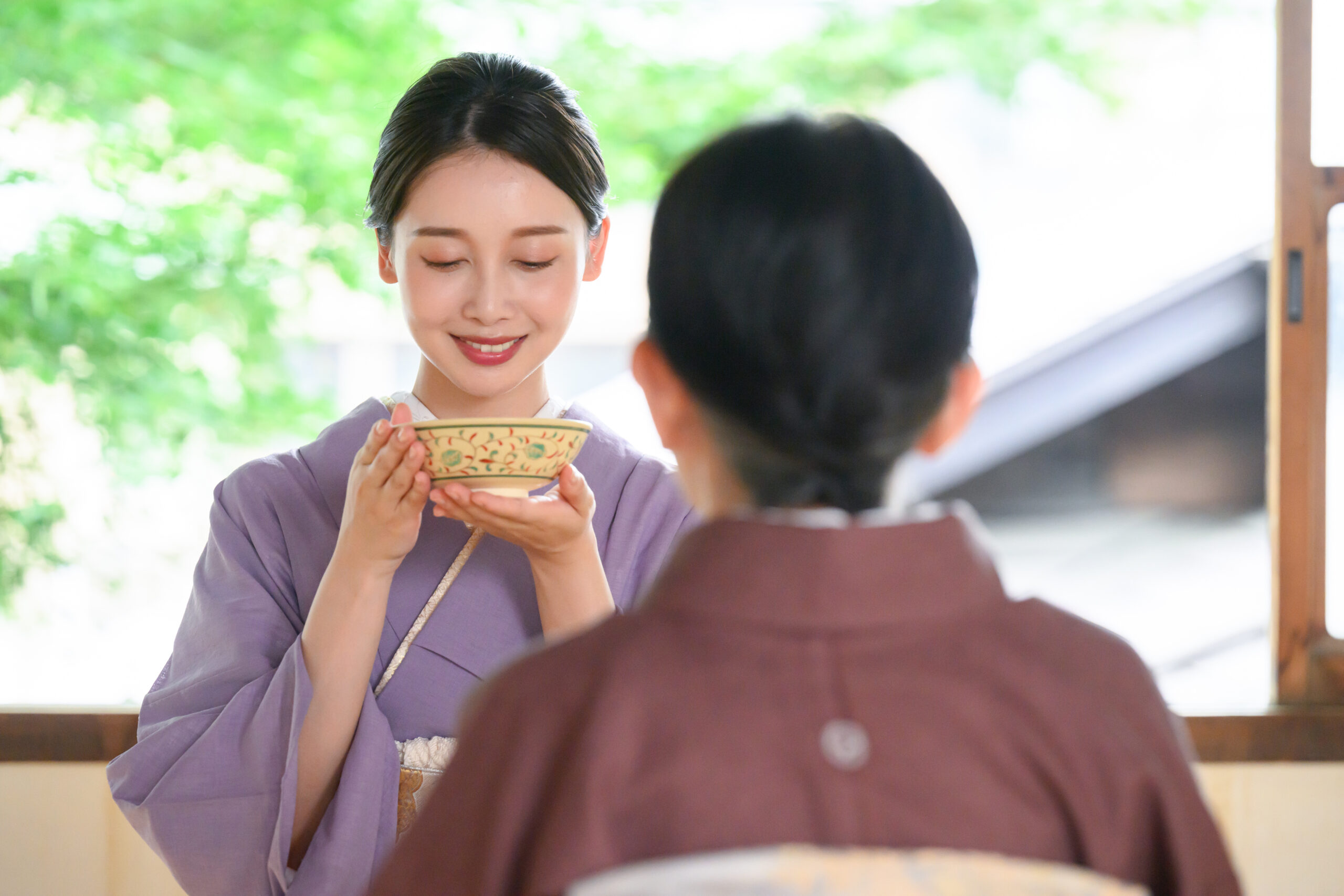
Post-Workshop Exploration: Continuing Your Craft Journey
Your Japanese craft workshop experience doesn’t have to end when the class is over. There are many ways to continue your exploration and deepen your appreciation for Japanese crafts beyond the workshop itself.
Visiting Local Craft Shops and Museums
After your workshop, consider visiting local craft shops and museums related to the craft you learned. Many areas known for specific crafts have dedicated museums showcasing the history and artistry of that tradition. Exploring local craft shops allows you to see a wider range of finished products, appreciate the diversity of styles and techniques, and perhaps even purchase a piece to add to your collection or give as a gift. This post-workshop exploration will further enrich your understanding and appreciation of Japanese crafts.
Sharing Your Experience and Creations
Share your workshop experience and creations with friends and family! Show them the piece you made, tell them about what you learned, and describe your experience of immersing yourself in Japanese culture. Share photos of your workshop and your creations on social media using relevant hashtags. Sharing your experience can inspire others to explore Japanese crafts and culture, and it also helps to solidify your own memories and appreciation of the experience. Your handcrafted souvenir will become even more meaningful as you share the story behind its creation.
Conclusion: Crafting Memories, Unlocking Japan
Create Your Own Japanese Souvenir
More than just acquiring a typical travel souvenir, participating in Japanese traditional craft workshops allows you to create something truly unique: a piece of Japan crafted by your own hands. This is a souvenir imbued with personal meaning, representing your direct engagement with Japanese culture and artistry. Every curve of the pottery, every brushstroke of calligraphy, every carefully folded layer of the 着物 (Kimono) – these are tangible reminders of your immersive experience and the skills you acquired.
Beyond the Workshop: A Deeper Connection to Japan
Japanese traditional craft workshops offer a powerful key to unlocking authentic Japan. They transcend typical sightseeing, providing a pathway to connect with the country’s rich cultural heritage on a deeper level. Through hands-on creation, guided by skilled artisans, you gain not just skills, but also insights into Japanese aesthetics, philosophy, and values. You leave with more than just a crafted object; you depart with lasting memories, enriched cultural understanding, and a personal story woven into the fabric of Japanese tradition. Embark on a craft workshop adventure and craft your own unforgettable Japanese story.
FAQ: Your Questions Answered
Do I need to speak Japanese to participate in these workshops?
Not necessarily. Many Japanese traditional craft workshops, especially those located in popular tourist destinations, are designed to be accessible to international visitors. A significant number of workshops offer instruction in English or have English-speaking staff available to assist participants. When searching for workshops, look for keywords like “English-friendly” or “English-speaking instructor” in the workshop descriptions. Booking platforms often provide language information. If you are unsure, don’t hesitate to contact the workshop provider directly to inquire about language support. While knowing some basic Japanese phrases can enhance your experience, it is generally not a prerequisite for participation in many tourist-oriented workshops.
Are these workshops suitable for beginners?
Absolutely! The vast majority of Japanese traditional craft workshops are specifically designed to be beginner-friendly. Instructors are experienced in teaching individuals with no prior experience in the craft. Workshops typically start with the fundamentals, providing step-by-step guidance and patient instruction. Whether it’s shaping clay, holding a calligraphy brush, or learning the basic movements of the tea ceremony, workshops are structured to ensure that everyone can participate and create something beautiful, regardless of their skill level. Don’t be intimidated if you have no prior art or craft experience – these workshops are designed for you!
How do I book a traditional craft workshop in Japan?
The easiest and most convenient way to book a Japanese traditional craft workshop is online. Utilize reputable booking platforms that specialize in Japanese experiences, such as Activity Japan or asoview!. These platforms offer a wide selection of workshops, allow you to search and compare options, and provide secure online booking systems. You can also explore tourism websites like the Japan National Tourism Organization (JNTO) website or local tourism boards, which may list workshops in specific regions. For popular workshops, especially during peak tourist seasons, it is highly recommended to book in advance, ideally several weeks or even months prior to your desired date, to secure your spot.
What should I wear to a craft workshop?
The recommended attire for a Japanese craft workshop is generally comfortable and casual clothing that you don’t mind getting a little messy. This is particularly relevant for pottery and calligraphy workshops, where you may be working with clay or ink. Avoid wearing delicate or expensive clothing that you would be concerned about staining. For pottery workshops, it’s advisable to wear clothes that you can easily wash or don’t mind getting clay on. For calligraphy, be mindful of ink spills and wear darker colors if possible. For tea ceremony and kimono dressing workshops, specific attire may be recommended or even provided, so check the workshop details beforehand. In general, prioritize comfort and practicality to fully enjoy the hands-on experience.
Can I take my creations home with me after the workshop?
In most Japanese traditional craft workshops, yes, you can take your creations home with you as a unique souvenir! For calligraphy and kimono dressing workshops, you will typically take home your calligraphy artwork and the experience of wearing a 着物 (Kimono) (photos will be your souvenir in this case). For pottery workshops, the process is slightly different. Your pottery piece will need to be fired in a kiln after the workshop to harden and become durable. Many pottery workshops offer shipping services, especially for tourists, and can ship your finished piece to your home address after it has been fired. Be sure to confirm the souvenir policy and shipping options with the workshop provider when booking, so you understand the process for taking your handcrafted treasure home.
